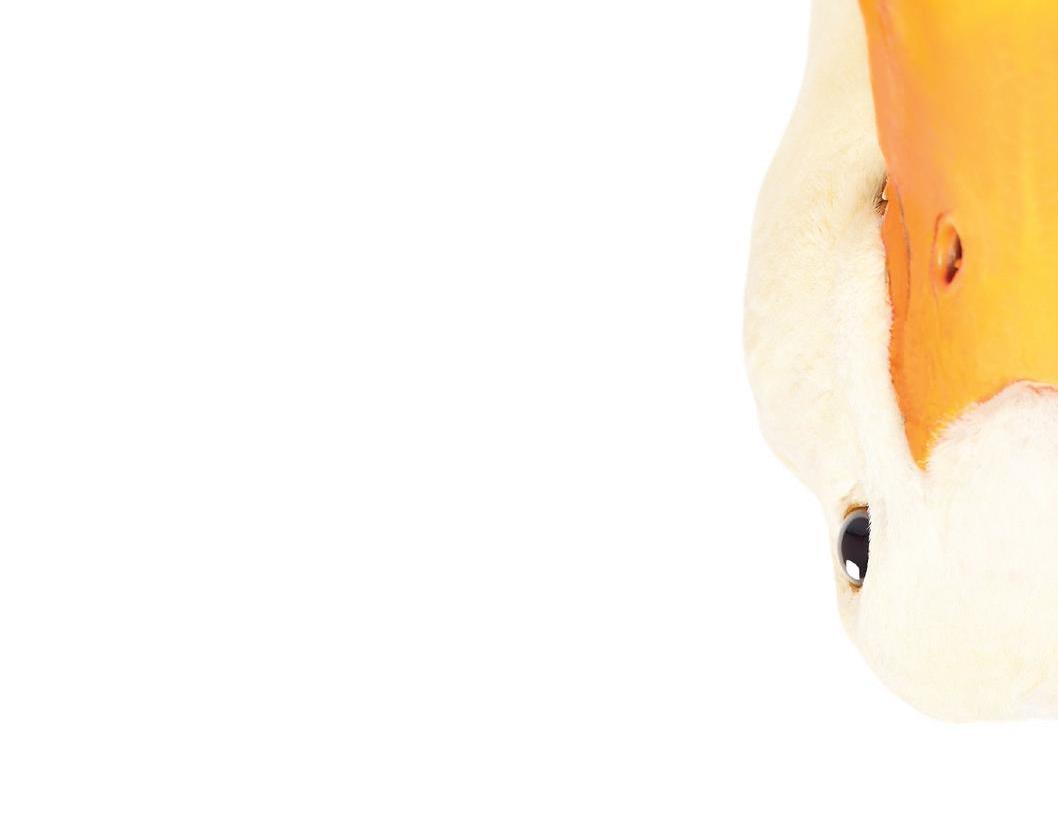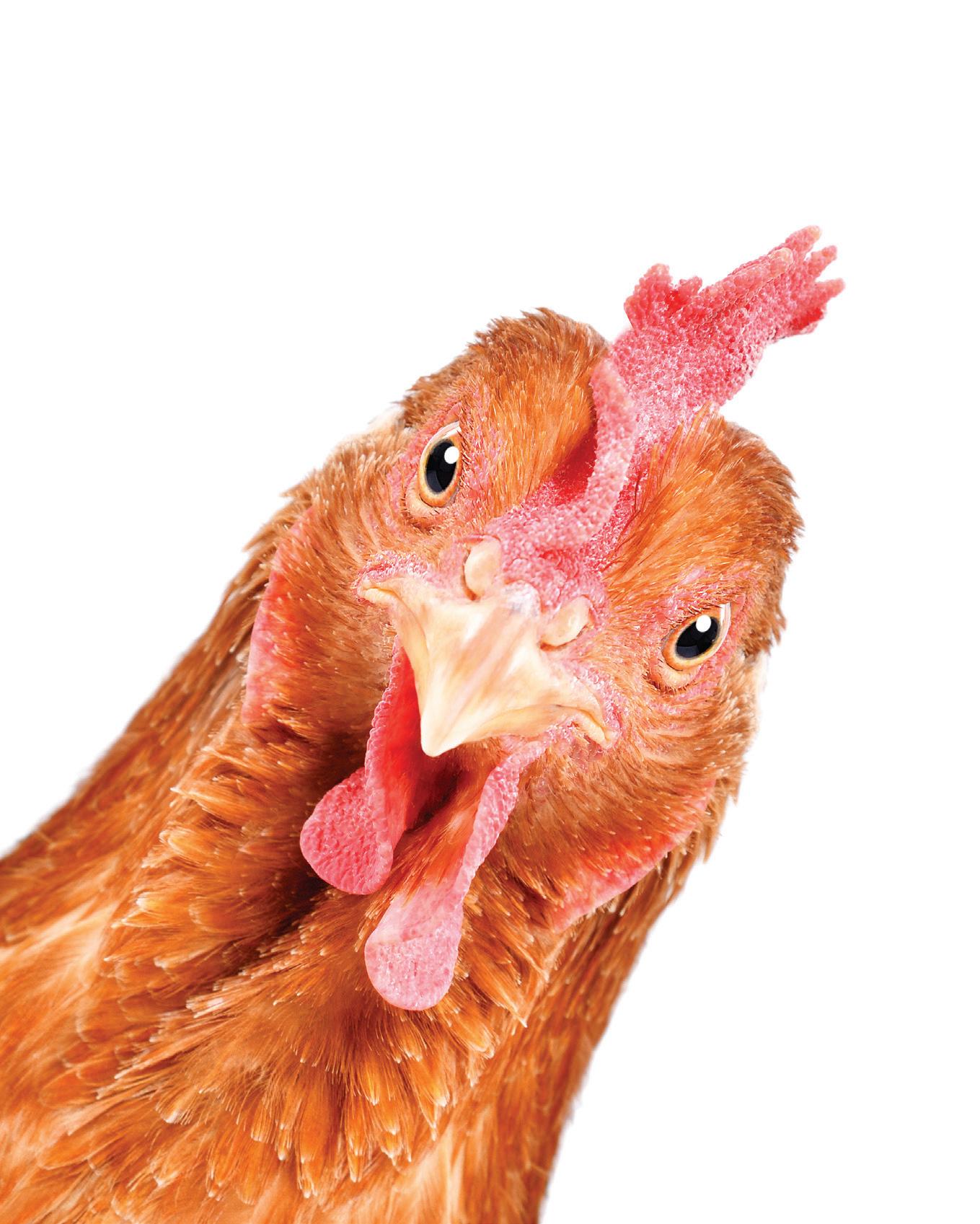
12 minute read
ONE HEN, TWO DUCKS
We underestimate the power of play. Play is an essential human activity. Play promotes growth, development, and well-being throughout our lifespan. Play is just as important for grandma as it is for her grandchildren. My friend and MINDRAMP colleague Roger Anunsen experienced the profound power of play in early 2001, the day he began a new job as activity director for an assisted living community.
Roger was a successful public interest lawyer for more than 25 years, specializing in protecting family farmers who faced foreclosure. He earned a reputation as a lawyer who rarely refused a case and was even known to accept old railroad ties or bags of hazelnuts as payment. But the need was too great and the burden of too many cases caused him to burnout by age 50.
Advertisement
He had worked himself too hard, spread himself too thin. Roger became immobilized, lost his passion for the law, lost his practice, and fell into a downward spiral. In the midst of this crisis, Roger’s wife suggested he consider a part-time job driving a van for an assisted living community where, as she put it, there would be lots of “Nanas.” Roger had loved his Nana who died in her 90s. He applied for the job and was hired.
When the community’s activity director suddenly quit, Roger was given the job. On his first day he faced a row of Nanas sitting motionless in their chairs The waiting for him to lead a “Sit & Be Fit” class. Power of Play “What do you do in Sit & Be Fit class,” he asked. Without comment, the ladies simply began working their way through well-practiced routines. No one smiled. No one made eye contact with Roger. As the class wore on, he by Michael C. grew restless and thought to himself, Patterson “My Nana wouldn’t stand for this.” As the final robot-like routine ended, Roger blurted out, “Repeat after me. One Hen.”
Silence.
Roger tried again, “Repeat after me. Like an echo. One Hen!”
The silence was broken when Lucy Buntjer took a breath and whispered, “One Hen.”
“YES!” He continued. “One Hen, Two Ducks.” He pointed at Lucy. She repeated the nonsense. “One Hen, Two Ducks.”
As Roger progressed to “One Hen, Two Ducks, Three Squawking Geese,” a few others joined Lucy in the call and response. Chins raised. Eyebrows lifted. Eyes came to life. Mouths creased into tentative smiles, followed by broad grins and laughter. Roger had everyone’s attention. The game was on! Roger was playing with his new Nanas.
Human beings are hardwired to play and suffer when denied the opportunity. Why? Because play is adaptive, it promotes behaviors that help us to survive and thrive. It is important that play is inherently pleasurable. Positive emotions trigger expansive and inclusive behaviors that develop our physical and mental capabilities.
In 1998, psychologist Barbara Fredrickson developed what’s known as the broaden-and-build theory of positive emotions. The theory notes that when we feel threatened, our mental field narrows to focus exclusively on solving the perceived threat. But when we feel safe, contented or joyful, the scope of our mental attention expands. When happy, we are more willing to engage in the kind of exploratory behavior that leads to learning and the development of physical and mental skills. Play puts us into a state of mind that is conducive to stimulating brain plasticity and positive growth of our brains.
While we accept the need to play when young, we sometimes forget that play and adaptive development continues to be

One Hen, Two Ducks

One hen Two ducks Three squawking geese Four limerick oysters Five corpulent porpoises Six pairs of Don Alversos tweezers Seven thousand Macedonians in full battle array Eight brass monkeys from the ancient sacred crypts of Egypt Nine apathetic, sympathetic, diabetic, old men on roller skates with a marked propensity toward procrastination and sloth Ten lyrical, spherical, diabolical denizens of the deep who hall stall around the corner of the quo of the quay of the quivery, all at the same time.
important for older adults. The need to think creatively—to respond flexibly and adaptively to inevitable change—is critical to our ability to adapt to the challenges of advanced age. The aging process is fraught with wrenching transitions. If we get stuck in our ways, these transitions can overwhelm us. To flourish in adversity, we need to remain flexible, creative, and open to change.
Play provided two important benefits for Roger’s Sit & Be Fit students. First, the silliness and surprise of the nonsense activity was a wake-up call for minds that had fallen into a kind of chronic slumber. Boredom and lack of stimulation had caused their grey cells to shut down. They were stuck in a dangerous, downward spiral of debility. Then, suddenly, their minds were being tickled by the sound and imagery of “Seven thousand Macedonians in full battle array.” Roger’s playful game roused their slumbering minds.
These older minds needed regular stimulation to gradually replace the negative mindset of hopelessness and despair with a positive one that welcomes the pleasure that accompanies meaningful engagement and exploration. Roger built on his unintentional experiment with “One Hen, Two Ducks” to develop a multi-faceted program of mentally stimulating activities for older adults that he calls MemAerobics.
The playful environment engendered positive mindsets and positivity stimulated engagement, exploration, and development that not only benefited them, but had a ripple effect on the entire community including staff and the residents’ loved ones. The spirit of play, is contagious.
Regular play was critical in pulling Roger out of his funk. And, through playful exploration and invention, Roger and the residents discovered a system for reactivating and reengaging mature minds that had begun to decline.
The effectiveness of Roger’s MemAerobics program was verified in a random controlled clinical trial conducted by Western Oregon University and published in 2003. MemAerobics became one of the cornerstones of MINDRAMP’s current brain health work with older adults.
Through playful engagement, Roger created a positive, multi-domain, brain-healthy environment. He enriched the lives of residents where he worked and completely transformed the culture of their community. And, along the way, he healed himself.

Michael C. Patterson, founder and CEO of MINDRAMP Consulting, writes extensively on the art and science of brain health and mental flourishing. He is an educator and consultant who previously managed AARP’s Staying Sharp brain health program and helped develop the field of creative aging.
2weeks after Dori Gillam’s 65th birthday, she broke her arm and herniated three discs in her neck. For 12 weeks after, when people saw her turquoise neck brace and arm in a sling, they’d ask, “What happened?”
“Cage-fighting,” Gillam would say.
They’d chuckle. Then she’d add, “Just kidding. What really happened was I was pole dancing, and the pole broke right out of the ceiling.”
She would watch as amusement turned to flustered confusion. And then she’d say, straight-faced, “You’ve never heard of a 65-year-old pole dancer?”
Finally, she would tell them the truth: “I fell. On the sidewalk.”
Fans of Gillam love this anecdote.
“She motivates me to live life a little lighter,” one friend said. “She just knows how to be.”
To which Gillam would say that it all goes back to her mom and dad: Clara and Ralph Wright, who were married for 70 happy years and both lived to be 95.
When times got tough, Ralph and
Clara liked to say, “Someday we’ll laugh at this.” And then Ralph would add, without a missing a beat: “So why don’t we start now?” Optimism—it was the secret sauce that flavored her parents’ long and joyful lives.
Gillam says it’s because she is “her father’s daughter” that right after her calamitous sidewalk fall she was
“cracking jokes with the EMTs as they were loading me into the aid car.” Later on in the ER, she and her brother were
“running George Carlin and Richard
Pryor lines, right along with the doctors.”
A few years later, Gillam broke her wrist right before a long-planned seven-day hike on the Inca Trail. She had trained hard, and thought she might be able to do it with her wrist in a cast, but it swelled painfully at high altitude. Instead of flying home, she stayed in Cusco and had “a lovely week chatting with shopkeepers and locals, taking photos with llamas, alpacas, and scores of children, and touring several other ruins, and even a condor rehabilitation center,” all while attending Spanish language immersion classes for four hours a day.
When you grow up with parents who continually create an atmosphere of “this is the way life is and we’re going to have fun, we’re going to make the most of it,” a positive attitude is in the air you breathe.
Ralph and Clara died one month apart in 2008. Gillam was one of their primary caregivers during their last seven years, an experience that profoundly shaped her attitude toward her own aging. In one of Gillam’s favorite photos of her dad, he is roller skating, at 85, at his nephew’s birthday party.
After a year upended by the pandemic, the outcry for social justice following the death of George Floyd, and a fraught election and frightening aftermath, talking to Gillam about how and why she stays positive was like drinking a big smoothie full of vitamins I didn’t know I needed so badly. No, we can’t laugh off a year like the last one, but we can laugh in spite of it. No, we can’t pretend it was easy, or that we liked being isolated from friends and family, but we can point to what we learned—Zoom!—and what we got used to—masks!—and even a few unexpected benefits— who’s had a cold lately? Or the flu? Who’s walking more than they ever did? Or snowshoeing, or bicycling?
Which brings us to Gillam’s signature line, the one that greets you on her website: “How old would you be
if you didn’t know how old you are?”
Gillam says a lot of her friends like to tell her, lovingly, that her inner age is set at about 16.
“Not that I’m childish or foolish, but that’s just the way my brain operates, the way I interpret and extrapolate.” She’s fine with 16, even though she sometimes wishes she could be more like her dad, who always said that on the inside, he was forever 25.
The advantage of being a teen inside is that you “don’t have too much trouble playing and seeing how healthy it is to play,” says Gillam. On her post-pandemic wish list is a visit to Montreal, where an installation of adult-sized swings at a bus
stop is charming every passerby who tries them out.
She may be a teenager at heart, but Gillam is widely known and loved in the Northwest for her work in the arena of aging. She has worked for Sound Generations, AARP, and Bayview Retirement Community, and writes frequently for 3rd Act Magazine. She is a frequent speaker on a wide range of aging-related topics, from resilience to retirement to end-of-life planning. She facilitates hundreds of “Wisdom Cafes,” first in partnership with the Northwest Center for Creative Aging and later with the King County Library System. The Wisdom Cafes are small-group conversations among older adults, on topics ranging from creative aging to mortality to ageism. I asked Gillam how older adults can effectively confront ageism in younger people. “For anyone who already is in your life, start asking them more questions about what it’s like to be 14 or 24. And check your own ageism, because it cuts both ways.” In other words, she says, if we don’t want to hear “OK, Boomer” put-downs, then we’ve got to let go of phrases like “entitled millennials,” because “everyone has gifts of the head, heart, and hands, and if we look for what people can do, instead of what they can’t do, no matter their age, we’ll have a better conversation anyway.”
This ties into another of Gillam’s favorite conversational topics: The legacy that each of us leaves around our own attitudes toward aging. “If you spend your life grumbling about how everything’s changed, if you spend your time talking about how much everything hurts, or what you can’t do, you’re teaching people that this is what aging looks like.” On the other hand, “are you saying, ‘Hey, there’s always something more fun or interesting to learn, there’s always something out there you can grab hold of.’ And that’s part of resilience, too, which of course I’ve learned from my parents.”
For Gillam, her own attitude adjustment habits include an hour of comedy per day—30 minutes in the morning and 30 minutes in the evening. Anything goes, from YouTube videos of the Marx Brothers, Carol Burnett, and Trevor Noah to funny pet photos on Instagram.
Pre-pandemic, she was a frequent volunteer for Habitat for Humanity, building homes in Zambia, India, China, and Central America. And she looks forward to more Habitat builds because, as she wrote in a 2017 3rd Act article about volunteer vacations, “volunteering to help someone—or further a cause—while traveling is a refreshingly addictive combination. When you help someone while learning something new, you are energized.”
Which takes us back to the importance of play, because some people might not think breaking bricks or bending rebar is what you’d call “play.”
“I love it when people find their third acts, or fourth acts, or fifth acts, because that’s part of what keeps us having fun—and I won’t say keeps us young, because we’re all still aging— but it keeps us vital and interested.”
As she explains, it’s not so much about play versus work, or retirement versus “re-wirement”—it’s about having “something to look forward to, something to do, something to believe in, something to love, and something to laugh about.” The people who “have those things in their lives, those are the people who are the most fun to be with.”
Like Dori Gillam. Who, by the way, was the winner of Sound Generations’ 2020 Lifelong Learning Award. Congratulations, Dori. Keep on learning, because we’re learning from you.
Ann Hedreen is an author (Her Beautiful Brain), teacher of memoir writing, and filmmaker. Ann and her husband, Rustin Thompson, own White Noise Productions and have made more than 150 short films and several feature documentaries together, including Quick Brown Fox: An Alzheimer’s Story. Ann recently completed a second memoir, After Ecstasy: Memoir of an Observant Doubter.







